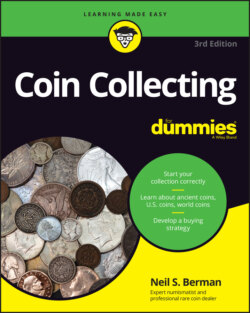Читать книгу Coin Collecting For Dummies - Neil S. Berman - Страница 47
THE HOARD FACTOR
ОглавлениеA hoard is a large group of coins, usually discovered many years after they were made, coming onto the market at the same time.
In the 1960s, the 1903-O silver dollar (struck at the New Orleans mint) was considered to be one of the great rarities of the Morgan dollar series despite a mintage of 4,450,000 pieces. For some reason, there simply weren’t enough coins to supply collector demand. Then, one day, the U.S. Treasury Department discovered a hoard of 1903-O silver dollars while cleaning out its vaults. Overnight, the price of a 1903-O silver dollar plunged as the supply increased to satisfy the existing collector demand.
The 1996 recovery of gold coins from the S.S. Brother Jonathan and the S.S. Central America shipwrecks dramatically affected the prices of certain dates in the Double Eagle denomination. Once considered to be a rarity in high grade, the 1857-S $20 is now one of the most common early gold coins, thanks to the hoard found on the Central America. Hoards account for the low prices of many ancient Greek and ancient Roman coins, as metal detectors and construction projects continue to turn up clay jars filled with old coins.
The size of a hoard and the way the coins are sold into the coin market determine the effect on prices. In the 1970s, a vast hoard of more than 600,000 U.S. silver dollars, once owned by the eccentric LaVere Redfield, began filtering into the market. The sheer size of the hoard threatened to kill prices because there wasn’t enough money in the coin market to absorb all the coins at the same time. But shrewd control of the pricing and distribution of the hoard kept prices from falling. In fact, some experts argue that interest in silver-dollar collecting actually increased because of the intelligent way that the hoard was distributed.
